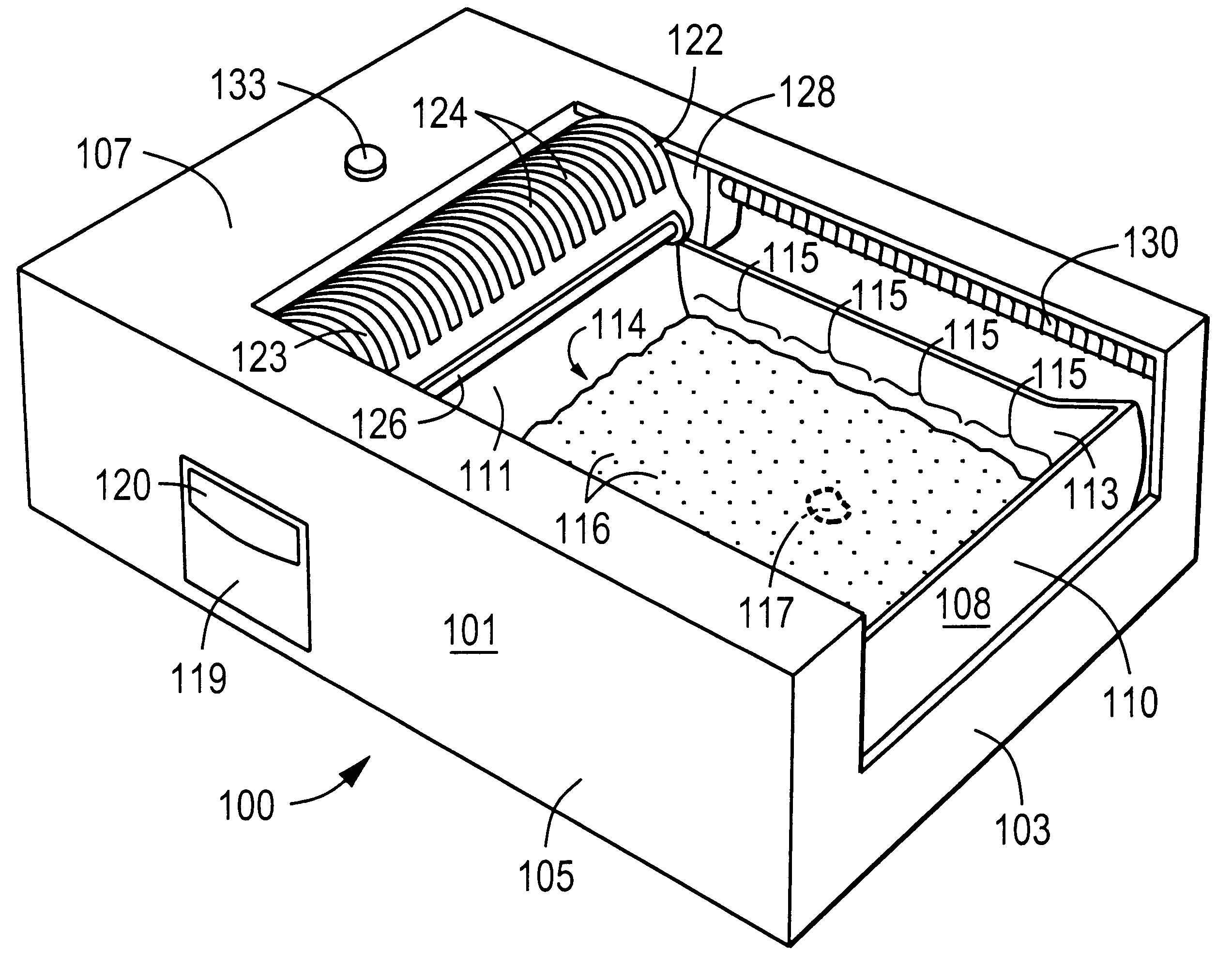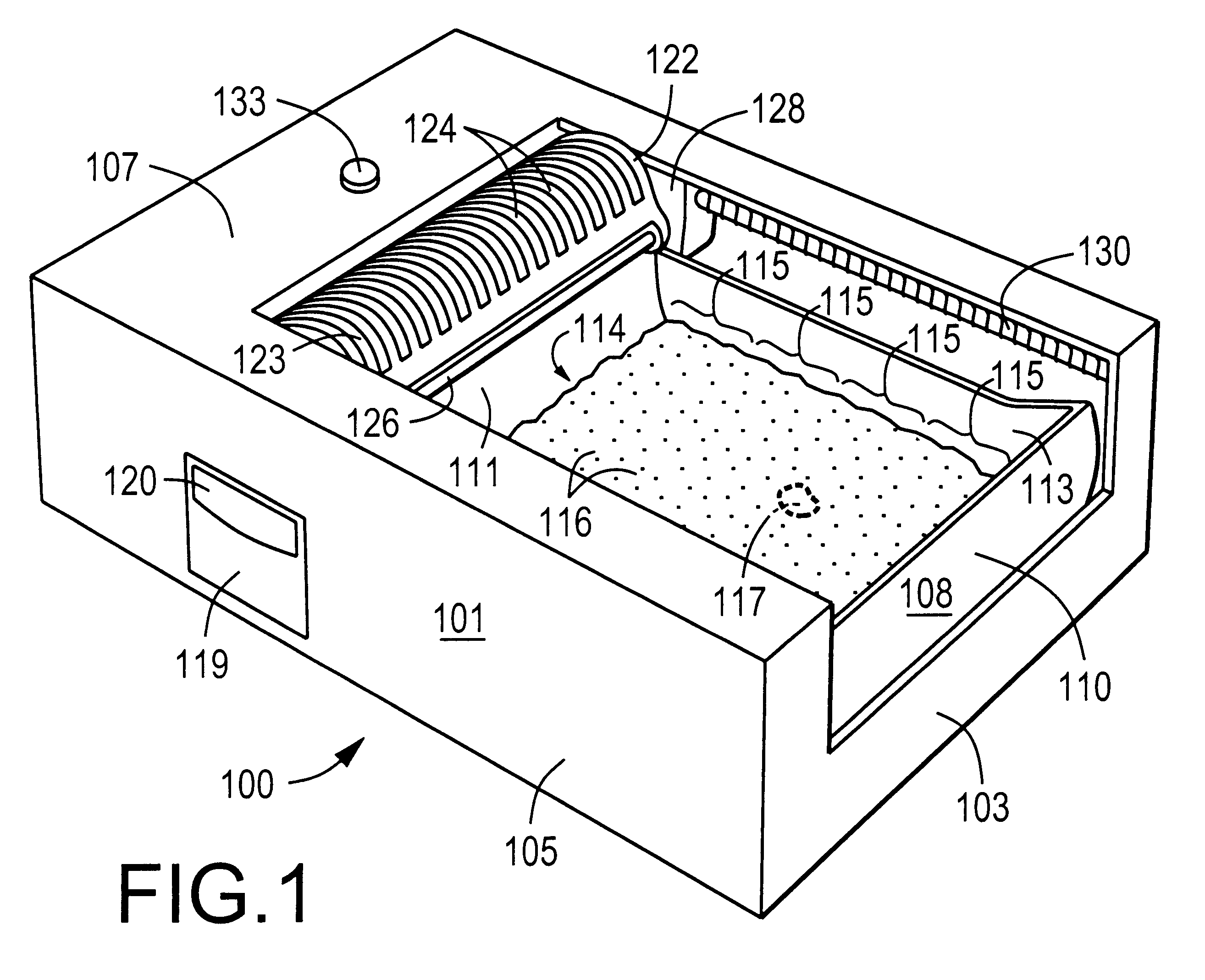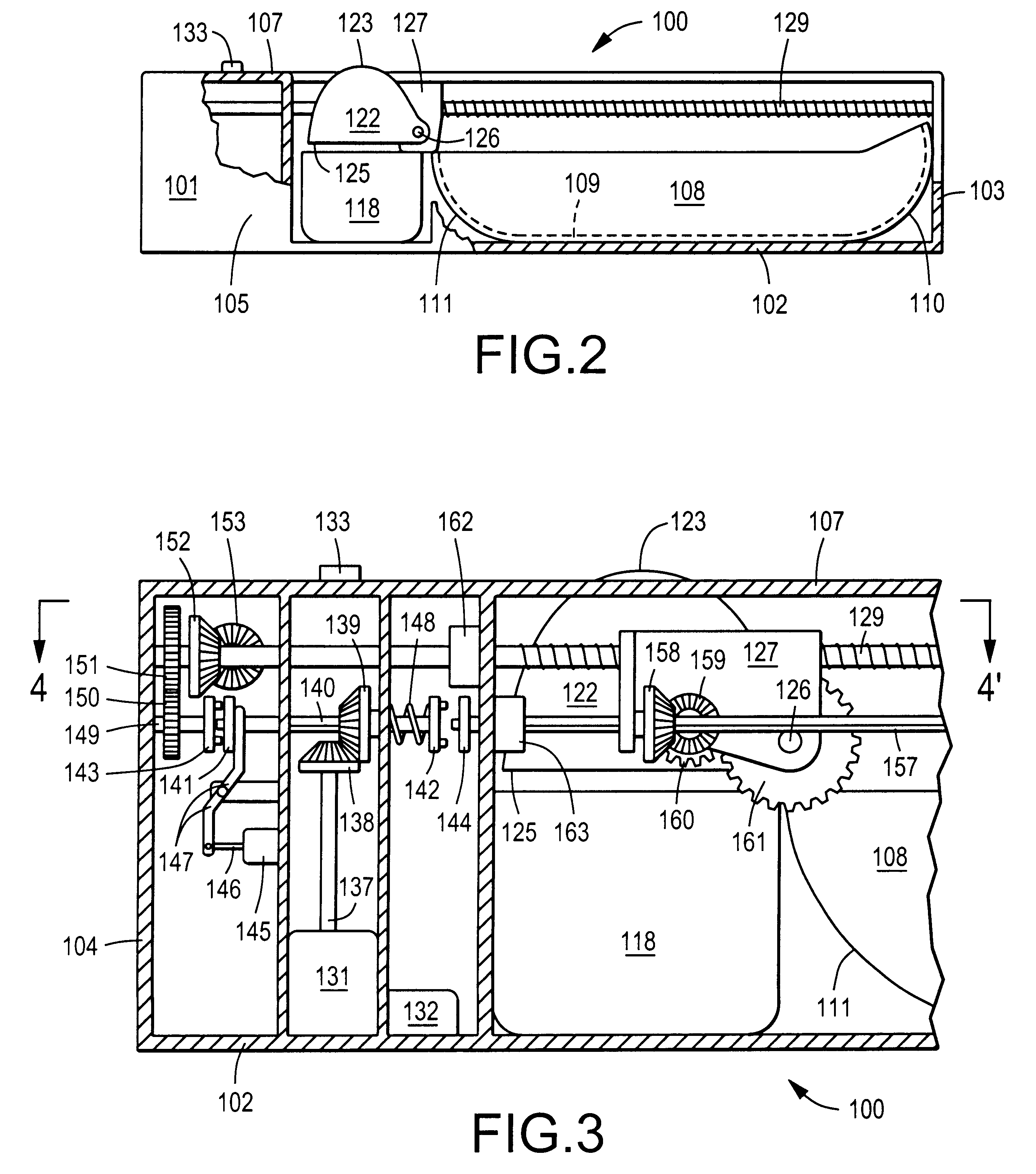Animal waste disposal system
a waste disposal system and animal technology, applied in the field of automatic waste removal systems, can solve the problem of animal waste falling into the waste container
- Summary
- Abstract
- Description
- Claims
- Application Information
AI Technical Summary
Benefits of technology
Problems solved by technology
Method used
Image
Examples
second embodiment
Description of the Second Embodiment
Another method of pivoting a scoop to remove animal's waste from different sections of a bed of particulate litter involves the use of tracks or guide rails positioned on opposite sides of the litter tray to engage with levers or fingers connected to the axis of rotation of the scoop as the latter is moved laterally. FIGS. 7, 8, 9 and 10 show the second embodiment of the present invention which employs this type of mechanism to remove animal's waste from three contiguous sections of the bed of particulate litter.
The animal waste disposal system 200 includes a housing 201 having a supporting base 202, a front wall 203, two outer side walls 204, 205, an outer rear wall 206, two inner side walls 207, 208, an inner rear wall 209 and a top panel 210.
A removable litter tray 211 is positioned on supporting base 202 between inner side walls 207 and 208. It comprises a bottom floor 212, a front curved end 213, a rear curved end 214, and two opposite side w...
first embodiment
FIGS. 11A to 11F are sectional side views of the middle and rear sections of the animal waste disposal system 200 showing six different positions of the waste-removing mechanism during a process of removing animal's waste from the rear section of litter tray 211. The litter and animal's waste are not depicted in FIGS. 11A to 11F in order to avoid confusion but it can be seen that the waste-scooping process for this embodiment is similar to the process described for the
The waste-removing operation begins with scoop 222 in its storage position shown in FIG. 11A. The user presses push button 229 to cause controller 228 to energize electric motor 227. Electric motor 227 rotates shaft 232 which is connected to bevel gear 233 in the clockwise direction (with respect to FIG. 8). Bevel gear 233 in turn rotates bevel gear 234 which is connected to horizontal shaft 235. The motion is transferred to threaded rod 239 by means of bevel gear 236 and 238, and to threaded rod 241 by means of bevel ...
third embodiment
Description of the Third Embodiment
It is also obvious to those skilled in the art that either of the two waste-removing mechanisms described above may be made to operate in a fully automatic fashion with the use of one or more sensors for detecting the presence of an animal inside the housing. However, since most types of animal sensor are known to malfunction from time to time and since the waste-removing mechanism must be quite powerful to be able to move a substantial amount of animal's waste and particulate litter inside the litter tray, there is a possibility that the waste-removing mechanism will injure an animal during its fully automatic operation.
A solution to this problem is to provide a partition or cover which automatically extends across the bed of particulate litter before the waste-removing operation begins to make the waste-removing mechanism inaccessible to the animal. The third embodiment of the present invention contains this type of partition which is attached to...
PUM
 Login to View More
Login to View More Abstract
Description
Claims
Application Information
 Login to View More
Login to View More - R&D
- Intellectual Property
- Life Sciences
- Materials
- Tech Scout
- Unparalleled Data Quality
- Higher Quality Content
- 60% Fewer Hallucinations
Browse by: Latest US Patents, China's latest patents, Technical Efficacy Thesaurus, Application Domain, Technology Topic, Popular Technical Reports.
© 2025 PatSnap. All rights reserved.Legal|Privacy policy|Modern Slavery Act Transparency Statement|Sitemap|About US| Contact US: help@patsnap.com



